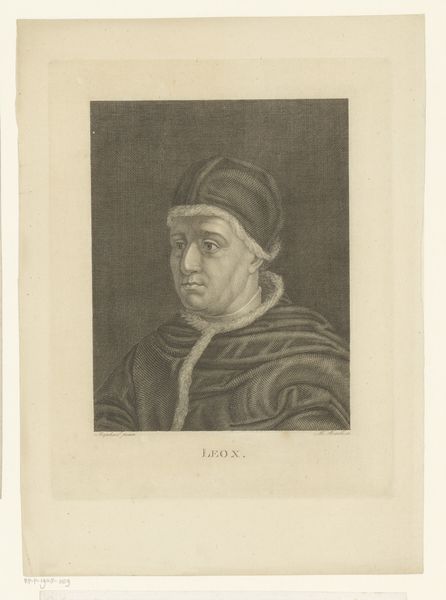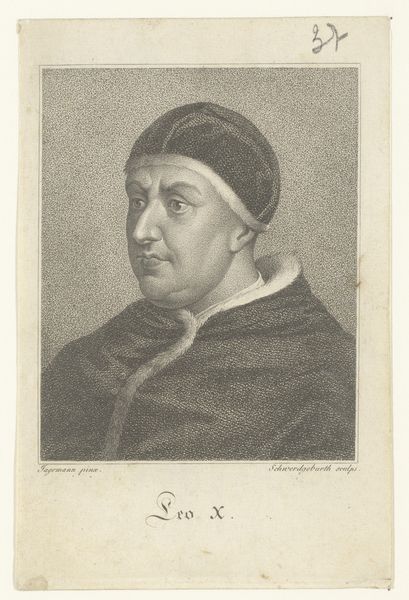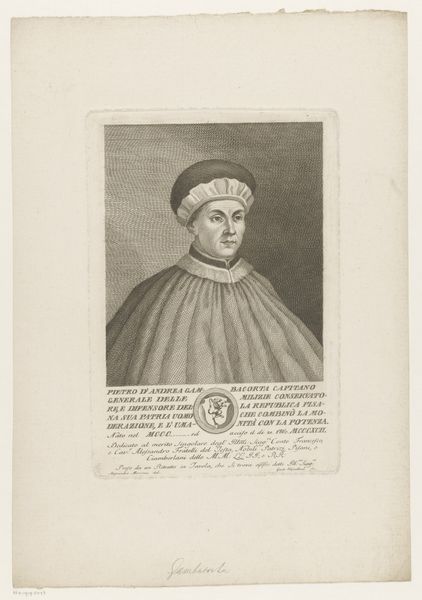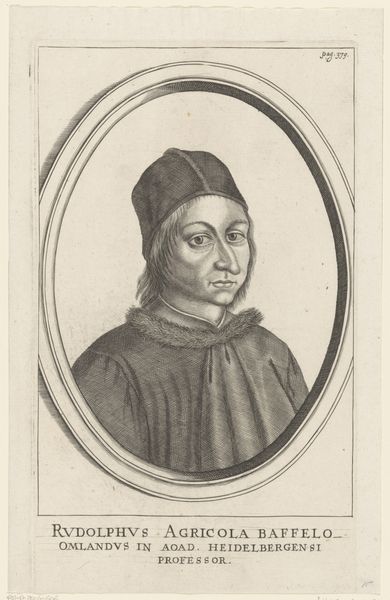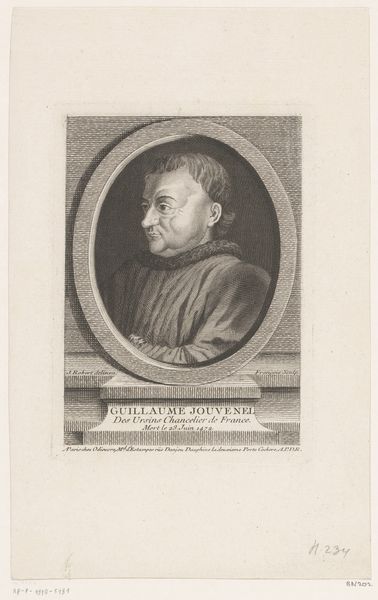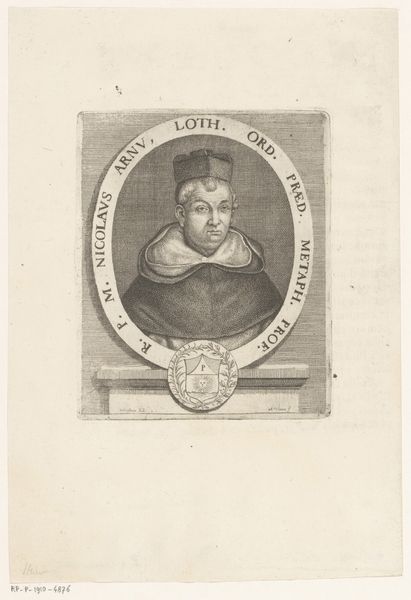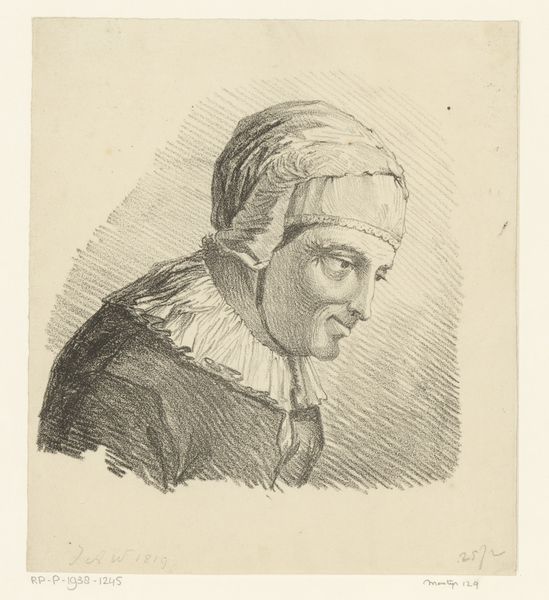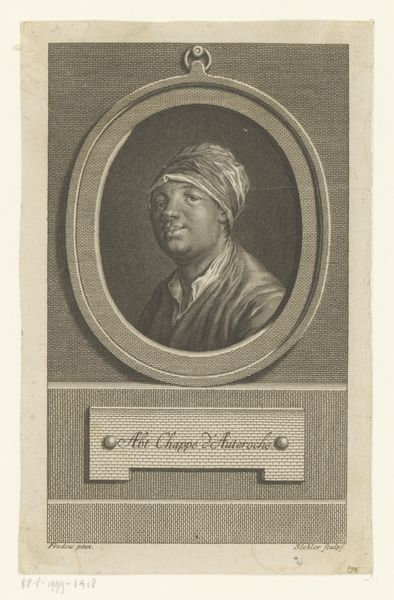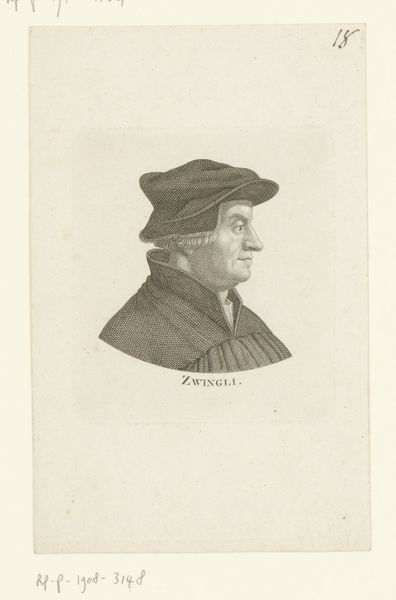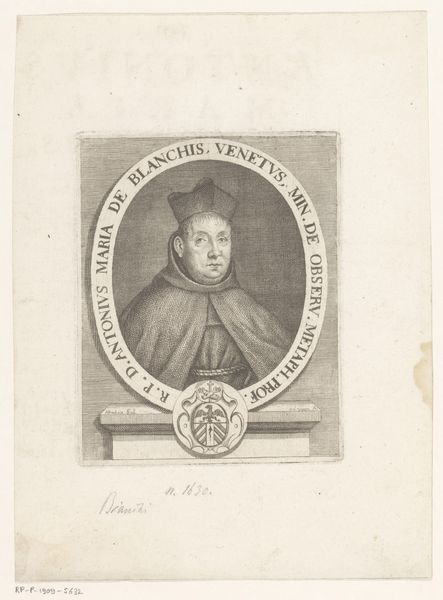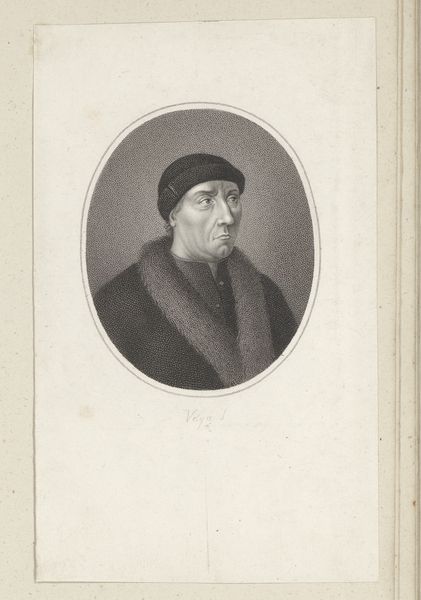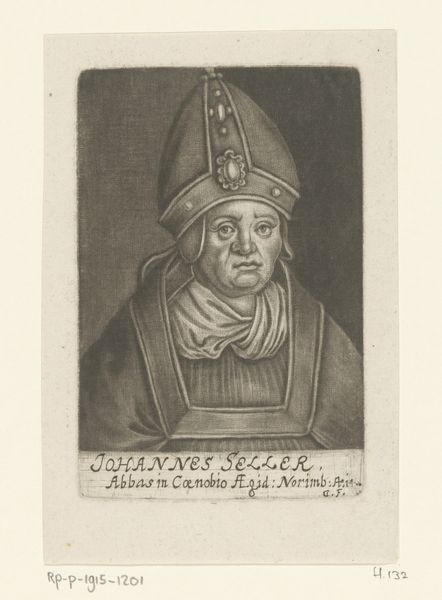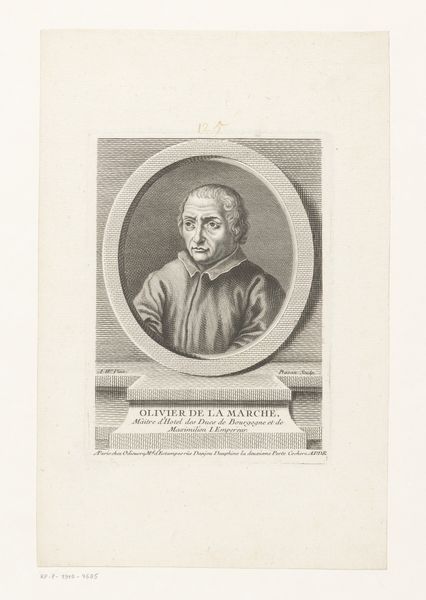
print, engraving
#
portrait
# print
#
old engraving style
#
history-painting
#
academic-art
#
engraving
#
realism
Dimensions: height 104 mm, width 90 mm
Copyright: Rijks Museum: Open Domain
Editor: Here we have "Portret van paus Leo X," a print created between 1775 and 1840 by Ernst Ludwig Riepenhausen. It’s a very precise engraving, almost photographic in its detail for the time. What strikes me is the contrast between the textures – the soft fur and the smooth skin. What do you see in this piece? Curator: The formal elements immediately apparent are line and tone. Consider the precision with which Riepenhausen has rendered the subtle gradations of light and shadow using only line. The hatching technique, so meticulously employed, defines not just form, but also the surface qualities to which you alluded: the plushness of the fur trim, the relatively unblemished surface of the skin, the weave of the cap. Editor: It’s interesting you focus on the lines. The overall effect to me is almost like a study in contrasts – light and dark, soft and hard. Does the technique itself lend to that contrast, or is it a choice Riepenhausen consciously made in composing the portrait? Curator: The very nature of engraving, a process involving the incising of lines into a metal plate, lends itself to stark contrasts. Each line either exists or does not. Thus, the artist is forced to build up tone and texture through the density and directionality of these lines. Consider how the light falling across Leo X's face is suggested not by blending, but by variations in the spacing of the engraved lines. The artist manipulates a limited vocabulary of marks to evoke a broad spectrum of visual experiences. Editor: That makes a lot of sense. The limited vocabulary emphasizes the textures and forms, doesn't it? I hadn't thought of it that way before. Curator: Precisely. The reduction to essential formal elements—line and its strategic deployment—is where its representational power resides. Editor: So, even without knowing anything about Leo X, one could appreciate the craftsmanship solely based on visual language. I see what you mean now; thank you!
Comments
No comments
Be the first to comment and join the conversation on the ultimate creative platform.
